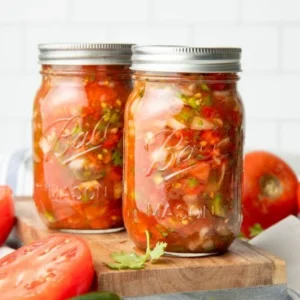Cannabutter, short for cannabis-infused butter, is a foundational ingredient in homemade edibles. Its roots trace back to traditional herbal infusions and have become increasingly popular as legalization spreads and cannabis cooking gains traction. This infusion allows users to enjoy the effects of cannabis without smoking, and it’s perfect for baked goods, sauces, or spreads.
The allure of cannabutter lies in its versatility and the mellow, herbal flavor it imparts to recipes. Whether you’re looking to bake a batch of pot brownies or elevate a savory meal, mastering this recipe is your first step into cannabis cuisine.
Ingredients
Here’s what you’ll need to make potent and flavorful cannabutter:
-
1 cup (2 sticks) unsalted butter
-
1 cup (7–10 grams) decarboxylated cannabis flower (preferably ground)
-
1 cup water (optional, helps regulate temperature and prevent burning)
Optional Substitutions:



-
Ghee or coconut oil for a dairy-free or vegan version
-
Trim or kief instead of flower (adjust potency accordingly)
-
Clarified butter to remove milk solids for smoother texture and longer shelf life
Step-by-Step Cooking Instructions
Step 1: Decarboxylate the Cannabis
Decarboxylation is essential—it activates THC and CBD.
-
Preheat your oven to 240°F (115°C).
-
Break cannabis into small pieces and spread evenly on a parchment-lined baking sheet.
-
Bake for 30–40 minutes, stirring halfway through.
-
Cool completely before using.
Step 2: Melt the Butter
-
In a saucepan, add 1 cup of butter and 1 cup of water over low heat.
-
Once the butter melts, add the decarboxylated cannabis.
Step 3: Simmer and Infuse
-
Keep the mixture at a low simmer (160–180°F / 70–80°C) for 2–3 hours.
-
Stir occasionally and do not let it boil—this can destroy cannabinoids.
Step 4: Strain
-
Place cheesecloth over a mesh strainer or funnel and pour the mixture into a jar or container.
-
Let it drain naturally; do not squeeze, or it may add bitterness.
Step 5: Cool and Store
-
Refrigerate until solid—any water will separate, and you can discard it.
-
Store cannabutter in an airtight container in the fridge for up to 3 weeks, or freeze for up to 6 months.
Pro Tips and Cooking Techniques
-
Use low heat—slow and steady wins the potency race.
-
Double-boiler method is great for beginners to avoid scorching.
-
Label your cannabutter clearly to avoid accidental consumption.
-
Use cheesecloth or nut milk bags for best straining results.
-
Always test potency with a small amount before using liberally.
Variations and Customizations
-
Vegetarian/Vegan: Use coconut oil or vegan butter.
-
Low-odor method: Use a slow cooker or sealed Mason jar method.
-
Flavor infusions: Add a pinch of cinnamon, rosemary, or garlic for specific recipes.
-
Regional twist: Try using herb-infused ghee (Indian style) or European-style cultured butter for a richer taste.
Serving Suggestions
Cannabutter is extremely versatile—try it in:
-
Brownies, cookies, or banana bread
-
Drizzled on popcorn or toast
-
Mixed into mashed potatoes or pasta
-
As a finishing touch on grilled vegetables or steak
Pro tip: Start with ¼ to ½ teaspoon per serving, especially if you’re unsure of potency.
Nutritional Information (Approximate per Tablespoon)
-
Calories: 100
-
Total Fat: 11g
-
Saturated Fat: 7g
-
Carbohydrates: 0g
-
Protein: 0g
-
THC/CBD content: Depends on strain & dosage (use an online calculator or lab-tested flower)
Frequently Asked Questions (FAQs)
Q1: How long does cannabutter take to kick in?
A: Edibles usually take 30–90 minutes to show effects, peaking around 2–3 hours.
Q2: Can I use raw cannabis?
A: No—decarboxylation is crucial to activate THC/CBD.
Q3: How do I store it?
A: In an airtight container in the fridge (3 weeks) or freezer (6 months).
Q4: What if I used too much cannabis?
A: You can dilute the batch with more regular butter or use smaller serving sizes.
Q5: Can I cook with it at high heat?
A: Avoid temperatures above 325°F (163°C), or you risk degrading cannabinoids.
Closing Thoughts
Making cannabutter is both a science and an art. With a bit of patience and the right technique, you’ll unlock a world of edible possibilities. Whether you’re baking brownies or stirring it into your favorite dish, this recipe is your golden key to homemade cannabis magic.
Ready to try it? Let us know how it went—share your favorite cannabutter recipes or drop questions in the comments!



